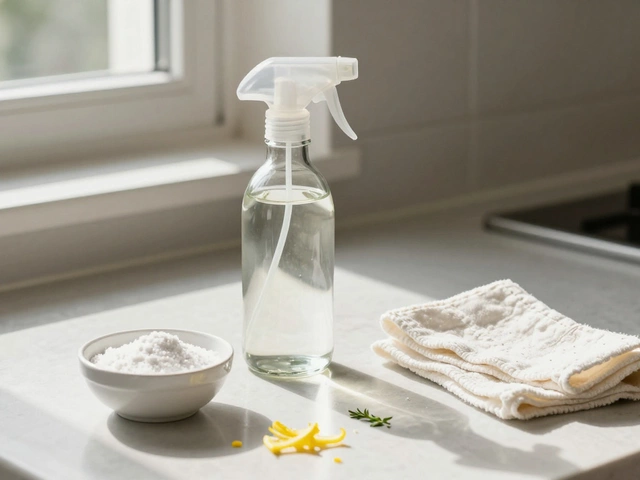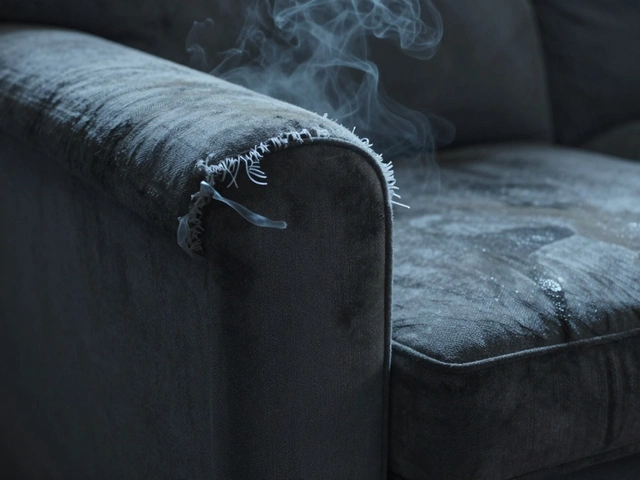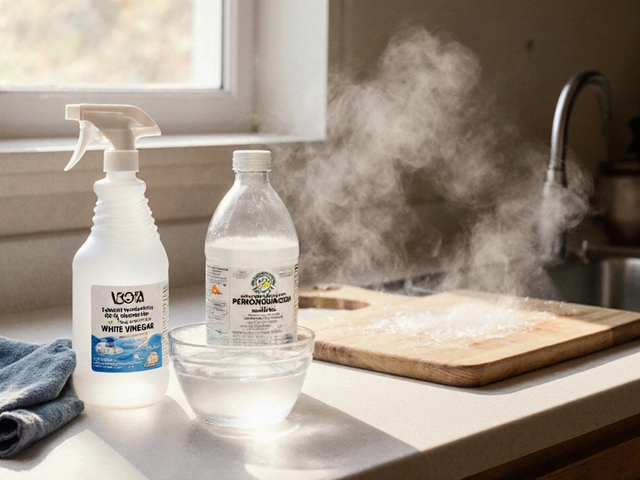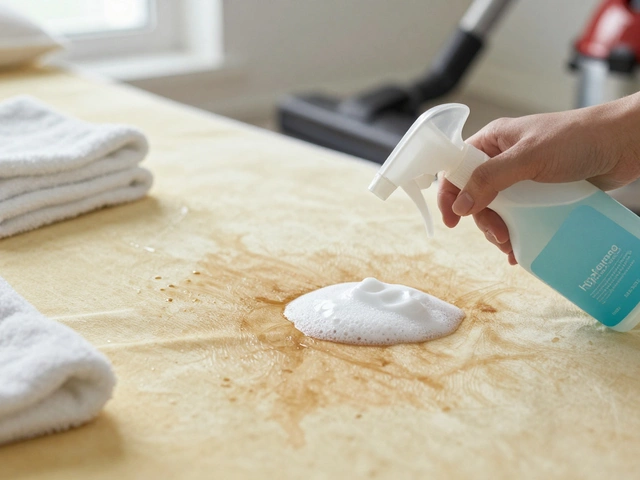Steam cleaners feel like magic wands—blast, wipe, done. But trust me, steam isn’t right for every couch or chair. You don’t want to realize too late that your favorite armchair shrinks, warps, or ends up with weird marks just because you tried to deep clean it.
The type of fabric matters more than you might think. Some upholstery, like silk, velvet, and old-school wool, really can’t handle the heat or moisture. One quick go with a steam cleaner, and you might see color bleeding, fabric puckering, or droopy cushions that never bounce back. If your furniture label says ‘dry clean only,’ or you’re not sure what it’s made of, hold off on the steam right away.
- Upholstery Fabrics That Hate Steam
- Stains Steam Can Make Worse
- Delicate Parts: Wood, Leather, and More
- Safer Alternatives for Tough Cases
Upholstery Fabrics That Hate Steam
If you think all couches love a steamy cleanup, think again. Some fabrics react badly to steam, and knowing which ones can save you a huge headache. Let's get to the stuff you should avoid steaming at all costs.
- Silk: This fancy fiber can’t handle heat or water. Steam will leave spots, shrinkage, or even break the delicate threads. Once that happens, there’s no real fix.
- Velvet: Especially old-school cotton or rayon velvet. Steam can squash its nap (the little surface fibers), ruining the fabric’s soft look and feel. Instead of freshening it up, you may get permanent crushed patches.
- Wool: Natural wool reacts weirdly to moisture and hot steam. You might see shrinking or get that odd felted texture that feels rough. You’ll also risk color bleeding—colors blending in ways you never wanted.
- Linen: It’s known to absorb water fast and dry slowly. Steam cleaning often leaves rings or wet marks that stand out, making it look worse.
- Printed or Dyed Fabrics: If the dye isn’t set well, steam can make colors run or fade. Cheap prints and deep colors are the biggest troublemakers here.
Quick tip: Check the cleaning label before you even think about reaching for the steam cleaner. You’ll see codes like “S” (solvent only), “X” (vacuum only), or “W” (water-based is okay). If you see “S” or “X,” don’t touch it with steam. When in doubt, do a spot test on a hidden corner, or just play it safe and use another steam cleaning method, or none at all.
Stains Steam Can Make Worse
It's tempting to grab a steam cleaner as soon as you spot a stubborn stain, but that can backfire quickly. Not all stains get along with steam. In fact, using steam on the wrong spot can set the stain deeper or even make the mess grow.
Let's break down which common stains you should never steam:
- Protein stains like blood, sweat, and dairy. High heat literally cooks these proteins into the fabric, making them almost impossible to remove after you steam.
- Oily stains from things like salad dressing, butter, or makeup. The steam can melt grease, causing it to move around or soak deeper into your upholstery.
- Old stains. Ever notice how a mystery mark looks faint until you clean it, and then it spreads or darkens? Heat can activate dyes or tannins left from spilled drinks like coffee or wine, spreading the stain or making it permanent.
One cleaning brand found that nearly 35% of upholstery stains reported by customers got worse after DIY steam cleaning attempts. Check out the numbers:
| Stain Type | Chance of Worsening (with Steam) |
|---|---|
| Protein (blood, milk) | High |
| Oily (butter, cosmetics) | High |
| Colored Drinks (wine, coffee) | Moderate to High |
| Dirt/Mud | Low |
If you’re dealing with any stain in the "high" category, avoid steam. Instead, blot gently with a dry cloth, or use a cleaning solution designed for your fabric. Test on a small area first. If the stain’s already set, sometimes it’s time to call in a pro.
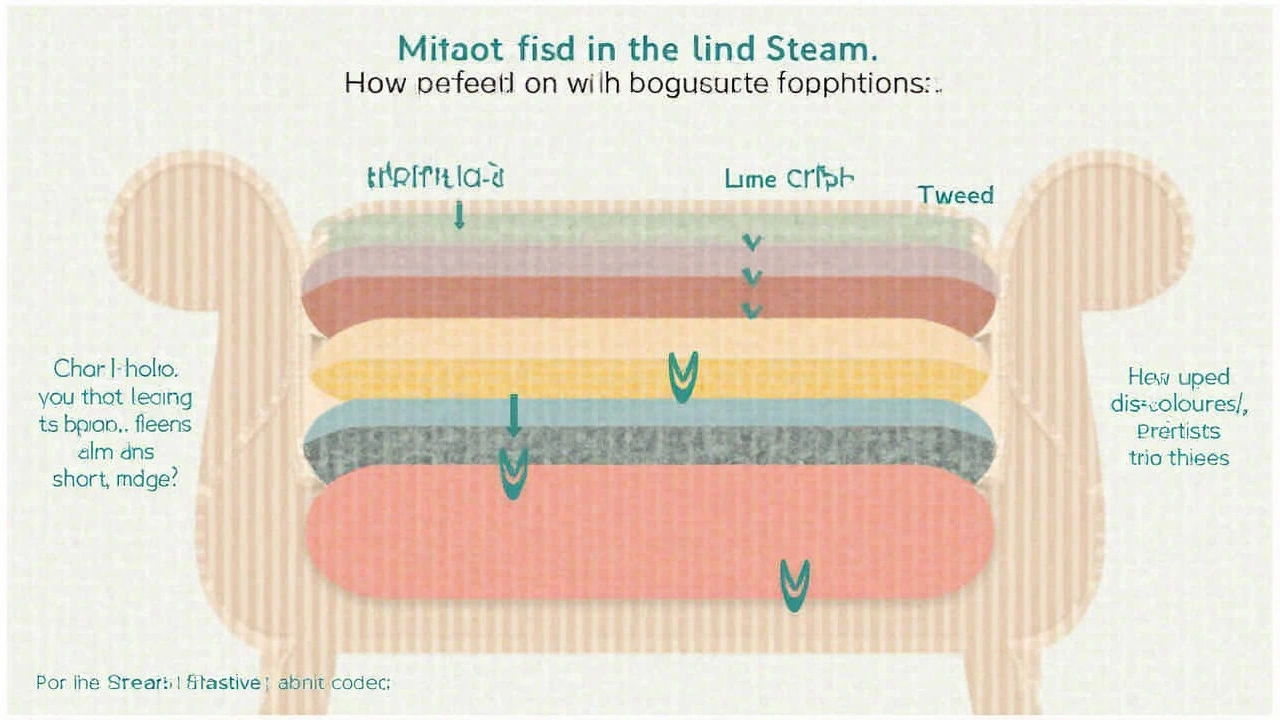
Delicate Parts: Wood, Leather, and More
It's easy to focus on the fabric and forget about the other parts of your furniture. But steam can cause real damage if you’re not careful around wood and leather details. I found this out myself when my son, Percival, and I tried to steam the crumbs out of our favorite recliner. I thought I was being clever, but the wood arms ended up looking dull, and the glued joints loosened.
Here’s the scoop: steam and wood are a bad combo. High heat and moisture can make wood swell or warp, and can even loosen the glue that holds everything together. Plus, finishes on the wood—like varnish or paint—can bubble, peel, or go cloudy if you hit them with a steam jet. So if your couch or chair has wooden legs, arms, or framing, keep the steam head away. Stick with a dry cloth and the occasional bit of furniture polish for the wood parts.
Leather is just as finicky. Steam cleaning can strip leather of its natural oils, making it dry out, fade, or even crack. You’ll often see advice online to use steam on leather, but real pros avoid it for a reason. If you want to clean leather, you’re better off using a soft cloth, a bit of mild soap, and special leather conditioner.
Watch out for other delicate details, too. Metal tacks or trim can react with moisture and start to rust. Decorative piping and decorative glue trims can come loose or lose their shape from heat. As a rule, every non-fabric piece on your furniture likes to stay dry.
- Keep steam away from wood to avoid swelling, warping, or finish damage.
- Don’t use steam cleaners on leather; they dry out and crack the material.
- Look out for metal and glued seams—steam can cause rust and loosen glue.
If you want to keep your steam cleaning safe and successful, always work around wood, leather, and other extras. Stick to dry, gentle methods for these parts and only use cleansers that are made for the specific material.
Safer Alternatives for Tough Cases
Okay, so if steam is out, what can you do to clean tough stains or tricky fabrics without risking disaster? You’ve got options that actually work, and they won’t leave you with regrets or a ruined sofa.
For starters, check out the cleaning code on your furniture tag. Most upholstery will say W (water-based cleaner), S (solvent-based cleaner), or WS (either is fine). If you see an S, skip any water—including steam. Go for dry cleaning sprays or foams that are made for home use. These usually work by spraying the product, gently brushing, and blotting away dirt. They're less messy, and you won't end up with soggy cushions.
If you have microfiber, one pro tip is rubbing alcohol. Spray it on lightly, scrub with a clean white sponge, and let it dry. This treats stains without soaking the fabric, and alcohol doesn’t leave watermarks. For delicate fabrics like silk or old wool, straight-up vacuuming with a soft brush attachment and blotting stains with a barely damp cloth (plain water or mild dish soap) often works best—no harsh stuff or soaking needed.
Kids and pets add another twist. If you’re cleaning up after a major juice spill or pet accident, use enzyme cleaners. They break down odors and stains without harsh chemicals or heat. Just make sure whatever product you grab is safe for your specific upholstery.
Here’s a quick look at popular alternatives for steam cleaning:
- Dry cleaning foam (for S-coded fabrics)
- Rubbing alcohol (great for microfiber)
- Vacuuming with upholstery brush
- Enzyme-based sprays (for organic accidents)
- Blotting stains with a water-and-dish-soap mix on colorfast fabrics
Got stats? The American Cleaning Institute found in a 2023 survey that 61% of people who accidentally steam-cleaned non-compatible fabric had permanent marks or shrinkage. That’s one of those mistakes that you don’t want to learn the hard way.
| Alternative | Best For | Risk Level |
|---|---|---|
| Dry Cleaning Foam | S-coded, delicate & antique fabrics | Low |
| Rubbing Alcohol | Microfiber, some synthetics | Low |
| Vacuuming | Most upholstery (routine maintenance) | Very Low |
| Enzyme Cleaners | Pet stains, kid spills | Low |
| Water & Dish Soap | Water-safe, colorfast fabrics | Medium |
If you aren’t sure what to use, test any method in a hidden spot first. Wait until it’s dry. No change? Keep going. Any fading, puckering, or weirdness? Stop and try something gentler. A little caution means your couch will stay in the family way longer—trust me, I’m still learning that one the hard way at home with Percival.


